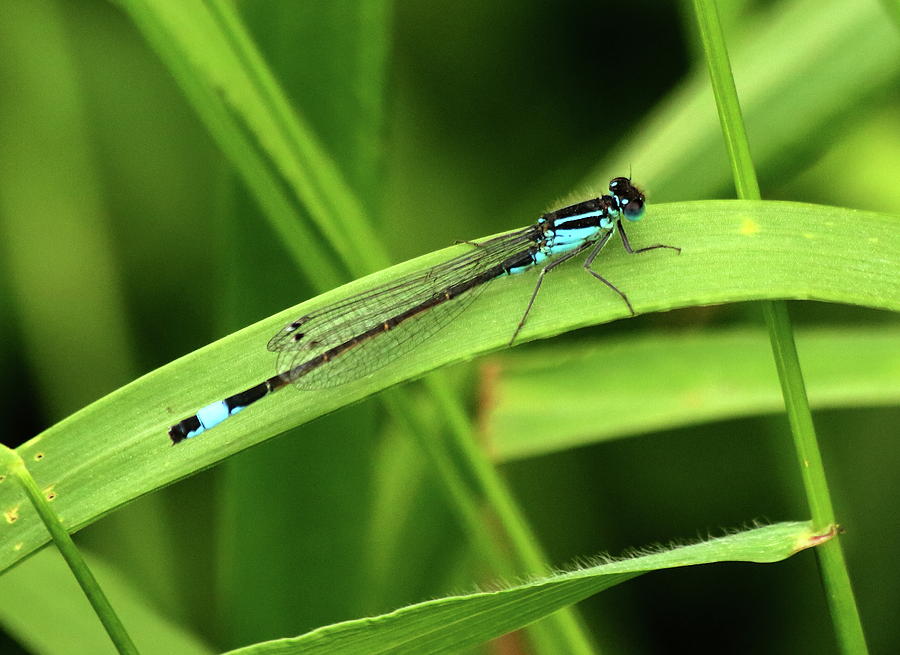

Finally, these findings were supported by field observations of natural mating pairs showing that mating partners are indeed chosen based on their body coloration. We further demonstrate that different color morphs can be discriminated against each other and the vegetation based on color contrast. heterosticta have at least three types of photoreceptors sensitive to UV, blue, and green wavelength, and that this visual perception ability enables them to detect the spectral properties of the color signals emitted from the various color morphs in both males and females. We measured body color reflectance and investigated the visual capacities of each morph, showing that I. We investigated this question in the Australian common blue tail damselfly, Ischnura heterosticta, which has pronounced female-limited polymorphism: andromorphs have a male-like blue coloration and gynomorphs display green/grey colors. However, solid evidence for this hypothesis combining physiological with spectral and behavioral data is scarce. Behavioral studies suggest that polymorphic damselflies use their varying body colorations and/or color patterns as communication signal for mate choice and to control mating frequencies. Good signal perception abilities are particularly important for polymorphic animals where mate choice can be a challenge. Some other insect nymphs also have similar structures, including mayfly nymphs and stonefly nymphs.Animal communication relies on conspicuous signals and compatible signal perception abilities. However some species are more rapid (between two to three months in emerald damselflies and more than five years in golden-ringed dragonflies).ĭragonfly nymphs have wider abdomens, and damselfly nymphs can be identified by the three fin-like structures at the end of their abdomen, known as caudal lamellae. The time for larval development (from hatching out of an egg to emerging as an adult) can vary between species, typically taking between one to two years. The juvenile stages of dragonflies and damselflies are called nymphs, and live underwater hunting down and eating live prey such as other insect larvae, leeches, tadpoles and small fish. What do dragonfly and damselfly nymphs look like? In recent years, its range has expanded, growing beyond Wales and England into Scotland. You'll usually find them along slow-flowing rivers, particularly those with muddy bottoms. Males have dark blue/black spots across their wings, but females’ wings are translucent pale green. Both males and females have metallic bodies, but males tend to be blue, while females are green.

One of the more visually impressive damselflies, the banded demoiselle has large, butterfly-like wings.
#Female common bluetail damselfly how to
How to identify dragonflies Broad-bodied chaser ( Libellula depressa) This Q&A originally appeared in BBC Wildlife and was answered by Christina Harrison. This lethal appendage can fully extend in as little as 15 milliseconds, giving the victim no time to react.Ī pair of pincers at its tip grab the prey and draw it into the mouth, where it is swifty chewed by the powerful serrated mandibles that give Odonata their name – ‘toothed jaw’. Internal hydraulic pressure – created by contraction of the abdominal muscles and closure of the anal valve – releases this mechanism and allows the labium to fire. When lunch approaches, it engages its labium – a specialised prehensile structure unique to this group that is folded up beneath the head when at rest and held in place using a locking mechanism. An individual lies in wait, using its excellent eyesight and sensitive, hair-like structures on its legs and antennae, known as mechanoreceptors, to detect a passing meal. Though they will chase down their prey, they are particularly well adapted to ambush hunting. How do dragonfly larvae hunt?ĭragon and damselfly larvae are fierce predators. As a rule of thumb, damselflies are mostly small and slender, resting with their wings folded along the body, while the larger, more robust dragonflies always hold their wings roughly perpendicular to their body. It's possible to tell the difference between the two. Like all insects, both ‘dragons’ and ‘damsels’ have six legs and a body divided into head, thorax and abdomen. How to tell the difference between dragonflies and damselflies


 0 kommentar(er)
0 kommentar(er)
